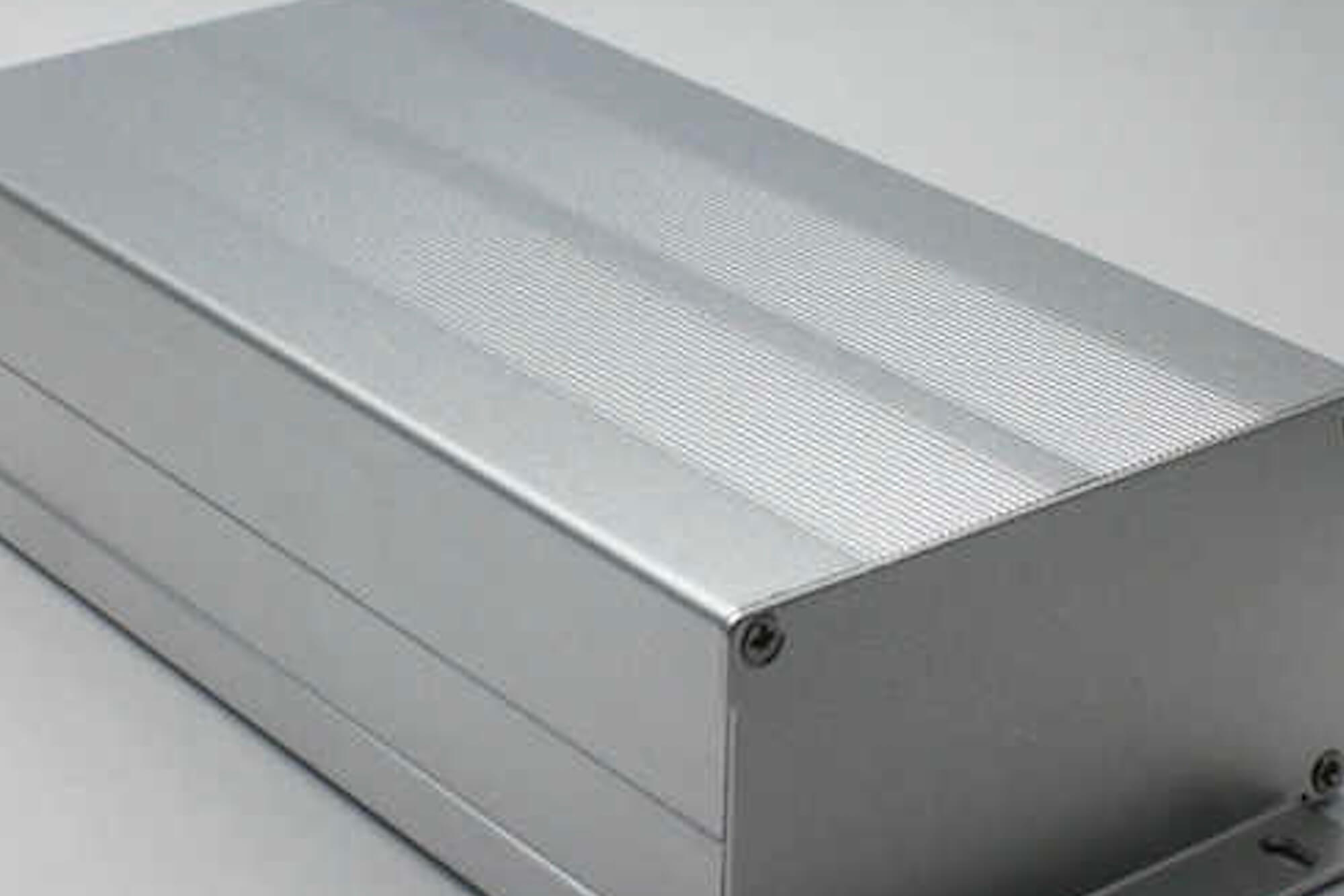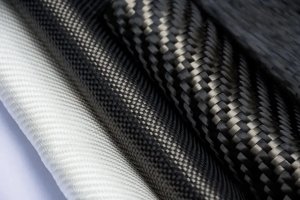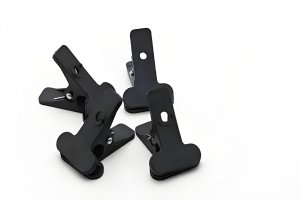Introduction
When I first came across clear anodized aluminum, I was designing a custom electronics enclosure for a client in the industrial automation field. They wanted something lightweight, durable, and clean-looking—something that could take a beating in a warehouse but still look sleek on a desk. Clear anodized aluminum checked all the boxes.
Over the years, I’ve worked with this material across multiple projects, from machine housings to high-end audio components. It’s one of those materials that keeps popping up—and for good reason.
In this article, I’ll break down exactly what clear anodized aluminum is, why it’s such a versatile choice, and how you can source and use it effectively. Whether you’re a product designer, manufacturer, or just exploring materials for your next idea, this guide will give you the full picture.
Chapter 1: What is Clear Anodized Aluminum?
Clear anodized aluminum is aluminum that has undergone a specific surface treatment called anodizing, which thickens its natural oxide layer to enhance durability, corrosion resistance, and surface finish. Unlike dyed anodized aluminum, clear anodizing leaves the metal’s natural silver-gray tone visible, resulting in a sleek, neutral appearance.
The Anodizing Process
Anodizing is an electrochemical process. The aluminum part is submerged in an acid electrolyte bath and exposed to an electric current. The aluminum acts as the anode, hence the name.
Here’s what happens:
- Oxygen ions combine with aluminum atoms on the surface.
- This forms a thick, controlled layer of aluminum oxide.
- In clear anodizing, no dyes are introduced—just sealing to close the pores.
The result? A transparent or slightly frosted finish that protects the metal without hiding its natural look.
Clear vs. Dyed Anodized Aluminum
| Feature | Clear Anodized Aluminum | Dyed Anodized Aluminum |
|---|---|---|
| Color | Silver-gray (natural) | Any color (black, red, blue) |
| UV Stability | Excellent | Varies by dye quality |
| Aesthetic Versatility | Minimalist, industrial | Custom color branding |
| Cost | Generally lower | Higher (due to added dye step) |
| Common in | Industrial, electronics | Fashion, consumer goods |
Key Benefits
- Durability: Anodized aluminum is 2–3 times harder than raw aluminum.
- Scratch Resistance: The hardened oxide layer reduces surface wear.
- Corrosion Resistance: Especially useful in humid or outdoor environments.
- Environmentally Friendly: No VOCs, recyclable base material.
When I started testing samples for an outdoor lighting fixture, I left one untreated and one clear anodized under constant water mist. The untreated one corroded within a week; the anodized one looked brand new after a month.
Applications at a Glance
| Industry | Example Use |
|---|---|
| Consumer Electronics | Audio casings, laptop shells |
| Industrial Equipment | Enclosures, control panel frames |
| Furniture | Brackets, handles, visible support parts |
| Aerospace | Non-critical structural components |
| Medical Devices | Non-reactive housings |
Clear anodized aluminum sits at the intersection of aesthetic neutrality and industrial strength. It’s clean-looking, doesn’t try to stand out, but quietly performs exceptionally well.
Chapter 2: Material Properties & Performance
When I first started working with clear anodized aluminum in a mechanical design role, I thought it was just about looks. But after running repeated tests on structural parts and panel covers, I saw how the anodized layer significantly altered the surface behavior of aluminum—making it not only more beautiful but dramatically more resilient.
Key Properties of Clear Anodized Aluminum
| Property | Performance Detail |
|---|---|
| Corrosion Resistance | Excellent in marine, high-humidity, and chemically active environments |
| Surface Hardness | Up to 60 Rockwell C—suitable for frequent handling and mild abrasion |
| UV Resistance | Superior to most coatings—no yellowing or fading |
| Thermal Stability | Can withstand temperatures above 200°C without delamination |
| Electrical Insulation | Naturally non-conductive once anodized |
| Color Stability | Long-term consistency—doesn’t chalk or peel like paint |
| Finish Variability | Options: satin, matte, brushed, polished |
I once designed a housing for a portable sensor used outdoors. The clear anodized finish not only gave the product a professional look but kept the shell cool under the sun—unlike black coatings, which tend to absorb more heat.
Real-World Material Testing
We compared five aluminum finish types under salt spray conditions for 500 hours. The clear anodized parts showed zero surface oxidation, while powder-coated samples began to blister.
| Surface Finish Type | Corrosion After 500 Hours Salt Spray |
|---|---|
| Raw Aluminum | Heavy pitting and oxide layer |
| Clear Anodized Aluminum | No visible damage |
| Powder-Coated Aluminum | Blistering at edges |
| Painted Aluminum | Chipping and discoloration |
| Dyed Anodized Aluminum | Minor fading, no corrosion |
From both an aesthetic and engineering perspective, the clear anodized aluminum finish simply outperforms most alternatives in long-term wear environments.
Chapter 3: Use Cases in Non-Architectural Industries
Clear anodized aluminum isn’t just for sleek buildings or fancy fixtures—it’s become a workhorse material in industries that prioritize performance, precision, and clean aesthetics.
Here’s how it’s being used where it matters most:
1. Consumer Electronics
I’ve seen clear anodized aluminum used in high-end audio gear, control knobs, and even laptop chassis. Apple famously popularized the brushed-aluminum look with its MacBook line—often made with clear or lightly tinted anodized finishes.
- Common Parts: Outer shells, bezels, heat sinks
- Why it works: Feels premium, resists fingerprints, easy to precision machine
- Real Use Case: I helped spec it for a Wi-Fi router casing—stayed cool, looked sharp
2. Furniture & Interior Fixtures
In minimalist and industrial design trends, clear anodized aluminum fits like a glove. I’ve worked with furniture designers who preferred it for drawer pulls, cabinet edges, table legs, and framing components.
- Common Parts: Structural brackets, edge trims, shelving supports
- Why it works: Neutral color, high precision, doesn’t rust
- Fun Fact: The same aluminum finish used in modern chairs is also used in spacecraft panels
3. Machinery & Industrial Equipment
Control panels and CNC machine enclosures often use clear anodized aluminum for lightweight protection and visual clarity. It’s also a favorite for operators—it doesn’t flake or peel even after frequent sanitizing.
- Common Parts: HMI panel covers, modular framing systems
- Why it works: Durable in oily, dusty, or wet conditions
- Firsthand Experience: We installed clear anodized rails in a bottling plant—zero degradation in three years
4. Aerospace & Transportation
Clear anodized aluminum components are common in aerospace interiors and trim parts in transportation systems, where weight, durability, and fire resistance matter.
- Common Parts: Seat frames, light fixtures, interior cabin components
- Why it works: Lightweight + corrosion resistant + non-flammable
- Note: Most non-structural flight components use Class I anodizing for long-term performance
Use Case Summary Table
| Industry | Use Case | Benefits of Clear Anodizing |
|---|---|---|
| Electronics | Enclosures, knobs, frames | Premium finish, heat resistance, durability |
| Furniture | Trims, legs, connectors | Clean look, resistant to oils, easy to match |
| Machinery | Control housings, equipment rails | Resistant to chemicals, washable, low weight |
| Aerospace | Cabin parts, internal mounts | Lightweight, non-corrosive, aesthetic durability |
| Automotive Accessories | Trim details, charging port frames | Sleek look, low-maintenance, weather-resistant |
Chapter 4: Design & Manufacturing Considerations
When you’re designing with clear anodized aluminum, there’s more to think about than just shape and dimensions. The anodizing process affects how the metal can be cut, etched, cleaned, and even how it reflects light. I’ve made the mistake of treating it like any other metal before—trust me, there are quirks.
✔️ CNC Machining Compatibility
Clear anodized aluminum machines beautifully—but always anodize after CNC machining, not before. Otherwise, you’ll slice off the protective layer and lose its benefits.
- Recommended Alloys: 6061 and 5052 anodize cleanly and consistently
- Tooling Tip: Use carbide tools with proper lubrication to prevent galling
- Post-Machining Cleaning: Critical before anodizing to prevent “smut” formation
✔️ Surface Finishes and Textures
Want a brushed, matte, or polished finish? You have to plan this before anodizing. The surface you start with is essentially the one you’ll keep—just harder and more durable.
| Finish Type | Surface Prep Required | Result After Clear Anodizing |
|---|---|---|
| Brushed | Wire brush or belt sanding | Visible linear texture, modern look |
| Matte | Glass bead or acid etching | Soft, diffuse reflection |
| Polished | Mechanical or chemical polish | High-gloss, luxury appearance |
I worked on a custom audio controller that required a matte black look. After testing, we chose clear anodizing over a bead-blasted surface—not only did it look premium, it completely eliminated glare under studio lighting.
✔️ Laser Engraving and Graphics
Another perk: clear anodized aluminum can be laser engraved with excellent contrast. This makes it perfect for labeling, branding, and serialized markings.
- CO₂ or fiber lasers both work well
- Engraving breaks through the oxide layer to reveal white text
- Durable and permanent—won’t fade like printed labels
This is one of my go-to techniques for control panels. I’ve engraved logos, model numbers, and even QR codes with perfect precision on anodized plates.
✔️ Coatings, Adhesives & Assembly
Anodized aluminum is non-conductive and slightly porous. That affects how well adhesives and coatings stick to it.
- Use primered adhesives for bonding (e.g. Loctite AA or 3M VHB)
- Avoid powder coating over anodized surfaces—it doesn’t adhere well
- Riveting and bolting? No problem—anodizing adds wear resistance
Chapter 5: Procurement & Sourcing Strategies
Buying clear anodized aluminum is not just about choosing a supplier off Alibaba. I’ve sourced from both local fabricators and overseas vendors, and I’ve learned the hard way how much finish consistency, quality control, and certification matter.
Here’s what to keep in mind when you start sourcing.
🧾 What to Look for in Specs
You should always ask for detailed spec sheets from vendors. Here are the key parameters:
| Specification | What It Means | Typical Value/Range |
|---|---|---|
| Anodizing Thickness | Layer of aluminum oxide (µm or mils) | Class I: ≥ 0.7 mils (18 µm); Class II: ≥ 0.4 mils (10 µm) |
| Alloy Type | Base aluminum alloy (e.g. 6061, 5052) | 6061 most common for structural |
| Finish | Surface treatment before anodizing | Brushed, matte, satin, polished |
| Sealing | Final step to close pores in oxide layer | Hot water or nickel acetate |
| Certification | Conformance to industry specs | MIL-A-8625F, ISO 7599, RoHS |
Ask for samples before placing a large order. In one case, we got a batch where the anodizing was uneven—half matte, half glossy. It turns out their sealing process was off. That wouldn’t have passed in aerospace or medical standards.
🛠️ Choosing Between Local and Overseas Suppliers
| Criteria | Local Suppliers | Overseas Suppliers |
|---|---|---|
| Lead Time | Faster (1–3 weeks) | Longer (4–8 weeks) |
| Customization | Easier communication | Needs clear spec drawings |
| Price | Higher per unit | Lower bulk cost |
| Minimum Order Quantity | Flexible | Often 1000+ pieces |
| Quality Control | Easier to verify on-site | Requires third-party inspection |
For rapid prototyping or custom projects, I usually stick with local anodizers. But for high-volume, price-sensitive production runs, a vetted overseas partner can be a game-changer.
⚠️ Mistakes to Avoid When Sourcing Clear Anodized Aluminum
- Not specifying thickness: You’ll end up with weak coatings that scratch easily
- Ordering dyed instead of clear: Yes, it happens—triple-check your PO
- Ignoring alloy types: Some alloys anodize poorly and turn blotchy
- Skipping pre-treatment: Dirty or oxidized surfaces ruin the final finish
Chapter 6: Common Problems and How to Avoid Them
As much as I love working with clear anodized aluminum, I’ve learned—sometimes the hard way—that it’s not a flawless material. There are certain mistakes that can compromise the finish, performance, or consistency. Let me walk you through some of the most common pitfalls, along with lessons I’ve picked up from real-world use.
⚠️ 1. Fingerprints, Smudges & Surface Contamination
One of the first things I noticed when using clear anodized aluminum in an office desk component was how easily fingerprints showed up, especially on polished or satin surfaces.
Cause: Smooth anodized surfaces tend to attract skin oils and dirt
Fix:
- Use a matte finish to hide prints
- Apply an anti-fingerprint (AFP) coating
- Include cleaning instructions for end users
⚠️ 2. Color Inconsistency Across Batches
This one stings—especially when a production run gets rejected due to visible differences in tone between parts that are supposed to match.
Cause: Variations in alloy, anodizing time, or surface prep
Fix:
- Batch parts together for anodizing
- Use the same alloy and supplier across runs
- Ask for “color control” samples when sourcing
⚠️ 3. Adhesion Failures for Coatings or Labels
One time we tried to apply UV-printed logos directly onto clear anodized aluminum. They peeled right off within a few days.
Cause: Sealed anodized layers are too slick for many adhesives
Fix:
- Use special primers or surface-etching before applying paint/labels
- Consider laser engraving for permanent markings
⚠️ 4. Pitting or Cloudy Finish
This happened with an early prototype we sourced from a low-cost supplier—the surface looked foggy and uneven.
Cause: Inadequate cleaning before anodizing or bad sealing process
Fix:
- Use ultrasonic cleaning before anodizing
- Vet your supplier’s QC process
- Specify ASTM B580 or ISO 7599 quality control
Common Issues & Solutions Table
| Problem | Likely Cause | Recommended Fix |
|---|---|---|
| Fingerprints & smudges | Smooth surface | Use matte finish or anti-fingerprint coating |
| Inconsistent color | Alloy or process variation | Anodize parts in same batch; lock vendor specs |
| Poor paint/label adhesion | Sealed oxide too slick | Use primers, or laser mark instead |
| Cloudy or pitted finish | Dirty parts or weak sealing | Pre-clean + stronger sealing chemistry |
| Scratches after use | Thin anodizing layer | Specify Class I anodizing (>0.7 mils or 18µm) |
I’ve found that a clear anodized aluminum part is only as good as its process—so pick your partners wisely and don’t skimp on quality checks.
Chapter 7: Future Trends and Innovations
Over the past decade, I’ve seen the demand for clear anodized aluminum shift from just industrial applications to lifestyle products, EVs, medical tech, and even sustainable construction. What’s driving this? Better finishes, cleaner processes, and smarter functionality.
Here’s where I see this material heading:
🌱 1. Greener Anodizing Chemistry
Traditional anodizing uses acids and heavy metals—not great for the environment. Thankfully, newer low-acid or sulfur-free anodizing solutions are emerging.
- Benefits: Lower emissions, easier wastewater treatment
- Trend: Growing adoption in Europe and among eco-conscious manufacturers
- My Take: If you’re marketing to sustainability-minded customers, this will become a key selling point
🧠 2. Smart & Functional Coatings
Clear anodized aluminum is now being paired with nano-coatings that offer anti-bacterial, anti-graffiti, or even self-healing properties.
- Example: A medical device manufacturer I worked with adopted nano-infused anodizing for surgical trays
- Techs to Watch: Plasma electrolytic oxidation (PEO), sol-gel coatings, AI-based quality monitoring
🔁 3. Circular Design & Recycled Aluminum
I’ve seen a spike in interest from companies looking to use recycled aluminum while still maintaining high-end finishes. The good news? Yes, you can clear anodize recycled aluminum—if it’s sorted properly by alloy.
- Challenge: Recycled content may vary in quality
- Opportunity: Brands can use this to market eco-friendly aluminum products
- Real Use: A client in the home appliance sector is now branding their product with a “100% Recycled Aluminum” tag—with clear anodizing intact
🚗 4. EV and Mobility Markets
Clear anodized aluminum is starting to replace plastic trim and interior panels in electric vehicles and scooters—where buyers value minimalism, recyclability, and precision.
- Advantage: Recyclable, aesthetic, more durable than chrome
- Adoption: Tesla, Lucid, and several bike brands are already on board
- Fun Fact: We prototyped an e-bike dashboard bezel using clear anodized aluminum—it was 40% lighter and 3x stronger than the original ABS plastic part
Conclusion
Clear anodized aluminum has been a go-to material for me, not just because of how it looks—but because it performs. It’s light, strong, clean, and incredibly versatile. Whether I’ve used it in a precision electronics enclosure or a custom office fixture, it’s proven to be dependable and surprisingly flexible across different industries.
If you’re looking for a material that bridges design and durability, clear anodized aluminum is a smart bet. Just make sure you understand how it’s made, how to source it properly, and how to avoid common mistakes. When done right, it doesn’t just hold up—it stands out.
I hope this guide helps you make better decisions when working with anodized aluminum. And if you’re diving into your first project with it—trust me, you won’t regret it.
FAQ
Here are the top questions I’ve gotten over the years from engineers, designers, and procurement leads when working with clear anodized aluminum:
1. What is clear anodized aluminum and how is it different from raw aluminum?
Clear anodized aluminum has a hardened surface formed through an electrochemical process, while raw aluminum has no surface treatment and is prone to corrosion and scratching.
2. Is clear anodized aluminum actually transparent?
No, the term “clear” refers to the lack of dye, not literal transparency. The finish is usually silver-gray and may have a satin or matte texture.
3. How durable is clear anodized aluminum in high-traffic environments?
Very durable. The anodized layer can withstand abrasion, UV exposure, and moisture. I’ve seen enclosures in factories last over 10 years without visible damage.
4. Can clear anodized aluminum be laser engraved or printed on?
Yes. Laser engraving works beautifully and offers permanent markings. Printing requires a primer layer to stick properly.
5. What’s the difference between Class I and Class II anodizing?
- Class I: Thicker coating (≥0.7 mils), for outdoor or high-wear use
- Class II: Thinner (≥0.4 mils), for indoor or decorative applications
6. How does anodized aluminum compare to powder coating in terms of longevity?
Anodizing penetrates the metal, so it doesn’t chip or flake like powder coating. It also holds up better under UV and wear conditions.
7. Is clear anodized aluminum safe for food-contact surfaces?
Yes, when sealed properly. Many commercial kitchens use anodized aluminum for trays and panels.
8. What are the best alloys for clear anodizing?
6061 and 5052 are the most common. Avoid high-copper content alloys like 2024—they produce blotchy finishes.
9. Can I paint or dye clear anodized aluminum after the process?
Not effectively. Once sealed, the pores close up. If you need to dye it, do so during the anodizing process before sealing.
10. What’s the typical thickness of the anodized layer?
- Class I: ~18–25 microns
- Class II: ~10–17 microns
Always specify your desired class to your anodizer.
11. Does clear anodized aluminum change color over time?
Not significantly, unless exposed to harsh chemicals or poor sealing. I’ve seen parts retain their appearance after years in sun and rain.
12. What are some common defects or issues with poor anodizing?
Cloudy appearance, inconsistent coloring, or flaking. Usually caused by contamination or uneven sealing.
13. How should clear anodized aluminum be cleaned or maintained?
Mild soap and water or a pH-neutral cleaner. Avoid abrasives or acidic cleaners.
14. Are there color variations across suppliers or batches?
Yes. Even with clear finishes, small shifts in tone can happen. Always test samples from new suppliers.
15. What industries benefit most from clear anodized aluminum?
Electronics, furniture, aerospace, medical, and mobility/EV sectors all use it for its strength, look, and weight.
16. How much more expensive is clear anodized aluminum compared to untreated aluminum?
Roughly 20–40% more per part depending on thickness and complexity. But it saves money in maintenance over time.
17. Can recycled aluminum be anodized clear just as effectively?
Yes, if it’s alloy-matched. I’ve used recycled 6061 that anodized just like virgin material.
18. Is anodized aluminum conductive?
No. The anodized layer is an electrical insulator, which can be useful in electronics.
19. Are there any sustainability concerns with the anodizing process?
Traditional anodizing uses chemicals, but new low-acid processes are reducing environmental impact.
Further Reading and References
Wikipedia – Anodizing Overview
A general but thorough explanation of the anodizing process, its history, chemistry, and application types.
🔗 https://en.wikipedia.org/wiki/Anodizing
Wikipedia – Aluminum Alloy 6061
Detailed material properties of 6061 alloy, one of the most common aluminum types used for clear anodizing.
🔗 https://en.wikipedia.org/wiki/6061_aluminium_alloy
NASA – Process Specification for the Anodizing of Aluminum Alloys
This official NASA document outlines the detailed procedures and requirements for anodizing aluminum alloys, including surface preparation, anodizing types, sealing processes, and quality control measures. It serves as a comprehensive guide for aerospace-grade anodizing practices.
🔗 https://www.nasa.gov/wp-content/uploads/2023/03/prc-5006-current.pdf
NASA – Electrically Conductive Anodized Aluminum Surfaces
This technical brief discusses methods to impart electrical conductivity to anodized aluminum surfaces, which is particularly relevant for aerospace and electronic applications where static discharge suppression is critical.
🔗 https://ntrs.nasa.gov/citations/20110014157
Aluminum Anodizers Council (AAC) – Anodized Aluminum Applications
The AAC provides an overview of various applications for anodized aluminum, highlighting its benefits in different industries and offering insights into the anodizing process.
🔗 https://members.anodizing.org/page/anodized-aluminum-applications
Other Articles You Might Enjoy
- The Ultimate Guide to Anodized Aluminum Machining: Properties, Processes, and Applications
Chapter 1: Introduction to Anodized Aluminum Anodized aluminum is not just aluminum with a colorful finish. It is aluminum that has been treated through an electrochemical process to form a…
- Anodized vs. Non-Anodized Aluminum: Which Is Better for CNC Projects?
An Introduction to Anodized and Non-Anodized Aluminum in CNC Projects In the realm of Computer Numerical Control or CNC projects, aluminum assets serve a pivotal role. Two classifications include anodized…
- Surface Treatment After CNC Machining Applications of the Anodized Aluminum Colors Chart
In the world of manufacturing, CNC machining is a cornerstone of precision and efficiency, especially when it comes to working with aluminum. However, the journey of a part doesn’t end…
- The Role of Surface Finishes in CNC Machining: Anodized Aluminum vs. Stainless Steel
The Role of Surface Finishes in CNC Machining: Anodized Aluminum vs. Stainless Steel CNC machining, standing for Computer Numerical Control, represents a prevalent technology used in the manufacturing sector where…
- Why Choose Hard Anodized Aluminum for CNC Machined Parts?
Why Hard Anodized Aluminum and CNC Machining Are Your Best Choice If you're a customer seeking high-performance, durable, and precision-engineered parts, this article is tailored to your needs. Hard anodized…
- Titanium Color and CNC Machining Techniques Explained
Introduction: The Appeal of Titanium Color in CNC Machining Titanium has always fascinated industries for its lightweight yet strong properties, but its natural titanium color adds an extra layer of…
- Powder Coating Cost Calculator Guide: Estimating Jobs by Size, Shape, and Volume
Introduction: Why Accurate Powder Coating Cost Estimation Matters When I first started exploring powder coating as an option for metal finishing, I underestimated how important accurate cost estimation really was.…






